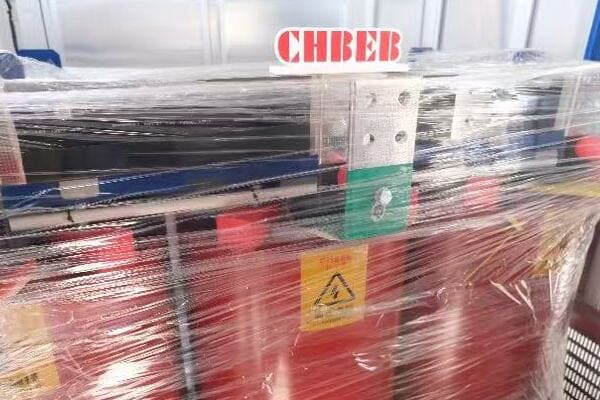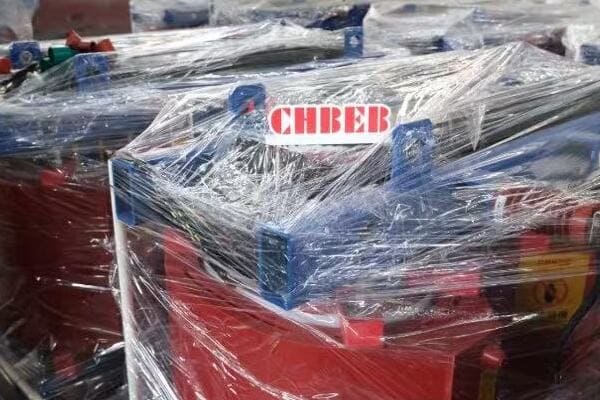Dry Type Transformer Types: How to Select the Right Manufacturer and Supplier?
Are you struggling to choose the right dry type transformer manufacturer? You’re not alone. Many buyers find this process overwhelming and confusing.
Selecting the right dry type transformer manufacturer involves evaluating their product range, manufacturing capabilities, quality control processes, technical expertise, and after-sales support. It’s crucial to match the transformer specifications with your specific application needs and consider long-term partnership potential.
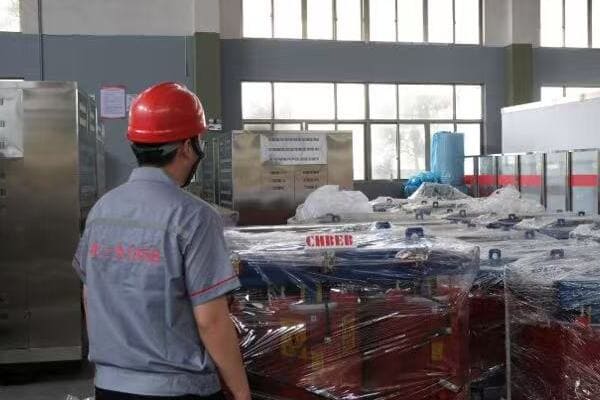
In my years of experience in the power industry, I’ve learned that choosing the right manufacturer is as important as selecting the right transformer. Let’s dive into the key aspects you need to consider to make an informed decision.
Understanding Dry Type Transformer Categories: A Comprehensive Overview?
Are you confused by the various types of dry type transformers available in the market? You’re not alone. Many buyers struggle to understand the differences and their implications.
Dry type transformers come in several categories, including cast resin, vacuum pressure impregnated (VPI), and open-wound types. Each type has its own advantages and is suited for specific applications, from indoor installations to harsh outdoor environments.
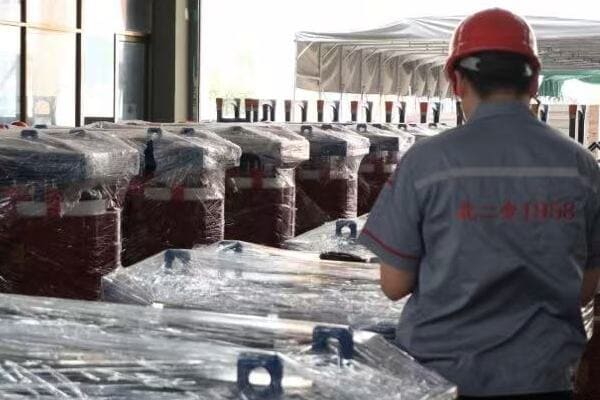
Let me break down the main categories of dry type transformers based on my experience in the field:
Cast Resin Transformers: The Robust Workhorses
Cast resin transformers are known for their durability and reliability:
-
Construction:
- Windings are encapsulated in epoxy resin
- Provides excellent protection against moisture and contaminants
- I once installed a cast resin transformer in a coastal industrial plant. After five years, it showed no signs of degradation despite the harsh, salty environment.
-
Applications:
- Ideal for indoor installations where fire safety is crucial
- Commonly used in high-rise buildings, hospitals, and offshore platforms
- In a recent project for a data center, we chose cast resin transformers for their fire-resistant properties and low maintenance needs.
-
Advantages:
- High short-circuit strength
- Excellent fire resistance
- Low noise levels
Vacuum Pressure Impregnated (VPI) Transformers: The Efficient Performers
VPI transformers offer a balance of performance and cost-effectiveness:
-
Construction:
- Windings are vacuum impregnated with varnish or resin
- Provides good protection against environmental factors
- I’ve seen VPI transformers perform exceptionally well in moderate industrial environments.
-
Applications:
- Suitable for both indoor and outdoor installations
- Often used in industrial plants and renewable energy projects
- We recently used VPI transformers in a solar farm project, where their efficiency and cost-effectiveness were key factors.
-
Advantages:
- Good thermal performance
- Lower cost compared to cast resin types
- Lighter weight, making installation easier
Open-Wound Transformers: The Basic Workhorses
Open-wound transformers are the simplest in design:
-
Construction:
- Windings are not encapsulated
- Rely on air circulation for cooling
- In my early career, I worked extensively with open-wound transformers in small industrial applications.
-
Applications:
- Best suited for clean, dry environments
- Often used in small commercial and light industrial settings
- I’ve installed these in many small workshops and retail spaces where budget was a primary concern.
-
Advantages:
- Most cost-effective option
- Easy to inspect and maintain
- Good for applications with lower power requirements
Comparison Table: Dry Type Transformer Categories
| Feature | Cast Resin | VPI | Open-Wound |
|---|---|---|---|
| Environmental Protection | Excellent | Good | Fair |
| Fire Resistance | High | Moderate | Low |
| Cost | Highest | Moderate | Lowest |
| Typical Applications | Critical installations | Industrial, Renewable Energy | Small commercial |
| Maintenance Needs | Low | Moderate | High |
| Weight | Heaviest | Moderate | Lightest |
In my experience, understanding these categories is crucial for making the right choice. For instance, in a recent project for a chemical plant, we initially considered VPI transformers for cost reasons. However, after assessing the corrosive environment, we opted for cast resin transformers. The higher upfront cost was justified by the increased durability and reduced maintenance needs in the long run.
Remember, the right type of dry transformer depends on your specific application, environment, and budget constraints. Don’t hesitate to consult with manufacturers about your unique needs – a good supplier will guide you towards the most suitable option.
Key Factors in Evaluating Dry Type Transformer Manufacturers and Their Capabilities?
Are you wondering how to differentiate between various dry type transformer manufacturers? It’s a common challenge many buyers face, and the choice can significantly impact your project’s success.
Evaluating dry type transformer manufacturers involves assessing their production capabilities, quality control processes, technical expertise, and industry reputation. Key factors include manufacturing facilities, certifications, R&D investments, and track record of successful projects.
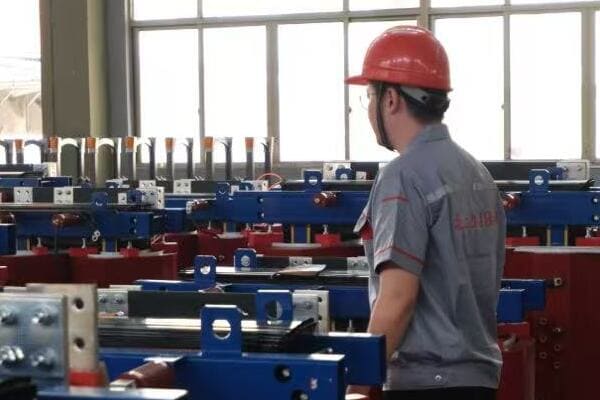
Let me share some insights I’ve gained over the years in evaluating transformer manufacturers:
Manufacturing Capabilities: The Foundation of Quality
A manufacturer’s production facilities tell you a lot about their capabilities:
-
Production Capacity:
- Can they meet your volume requirements?
- Do they have flexibility for both large and small orders?
- I once visited a factory that could produce transformers ranging from 5 kVA to 10 MVA. This flexibility was impressive and crucial for our diverse project needs.
-
Technology and Equipment:
- Are they using modern, state-of-the-art equipment?
- Do they have automated processes for consistency?
- In a recent factory tour, I saw advanced winding machines that ensured precise and consistent winding patterns, crucial for transformer performance.
-
Customization Abilities:
- Can they modify designs to meet specific requirements?
- How quickly can they prototype custom designs?
- We once needed a transformer with unusual voltage ratings. The manufacturer’s ability to quickly design and prototype it was a game-changer for our project timeline.
Quality Control Processes: Ensuring Reliability
Quality control is paramount in transformer manufacturing:
-
Testing Facilities:
- Do they have in-house testing capabilities?
- What range of tests can they perform?
- I was particularly impressed by a manufacturer who had a full suite of testing equipment, including partial discharge and temperature rise tests.
-
Quality Certifications:
- ISO 9001 certification is a must
- Look for industry-specific certifications (e.g., IEEE, IEC compliance)
- One manufacturer’s UL certification was crucial for our North American market entry.
-
Quality Control Procedures:
- How do they ensure consistency across batches?
- What’s their defect rate and how do they handle issues?
- A manufacturer’s detailed quality control manual and low defect rate gave us confidence in their products.
Technical Expertise and Innovation
A manufacturer’s technical prowess can set them apart:
-
R&D Investments:
- Do they have ongoing research and development programs?
- Are they innovating in areas like efficiency and materials?
- I was impressed by a manufacturer who was developing nano-composite materials for better transformer efficiency.
-
Technical Support Team:
- How knowledgeable and responsive is their technical team?
- Can they provide design assistance and recommendations?
- The ability of one manufacturer’s team to quickly solve a complex installation issue saved us weeks of downtime.
-
Industry Partnerships:
- Do they collaborate with universities or research institutions?
- Are they involved in industry standard development?
- A manufacturer’s participation in IEEE standards committees showed their commitment to industry advancement.
Track Record and Industry Reputation
Past performance often indicates future reliability:
-
Project Portfolio:
- Have they worked on projects similar to yours?
- Can they provide case studies or references?
- Reviewing a manufacturer’s portfolio of successfully completed projects in our industry gave us confidence in their capabilities.
-
Customer Feedback:
- What do their current and past customers say?
- Are there any recurring issues or praises?
- Speaking directly with other customers provided invaluable insights into the manufacturer’s strengths and weaknesses.
-
Industry Recognition:
- Have they won any awards or recognitions?
- Are they considered thought leaders in the field?
- A manufacturer’s regular presence at industry conferences and publications in technical journals impressed us with their expertise.
Comparison Table: Evaluating Manufacturer Capabilities
| Factor | What to Look For | Why It Matters |
|---|---|---|
| Manufacturing Capacity | Range of sizes, Customization ability | Ensures they can meet your specific needs |
| Quality Control | Certifications, Testing facilities | Guarantees product reliability and performance |
| Technical Expertise | R&D investments, Support team quality | Indicates ability to solve complex problems and innovate |
| Track Record | Project portfolio, Customer feedback | Demonstrates real-world reliability and customer satisfaction |
In my experience, thoroughly evaluating these factors can save you from future headaches. I remember a project where we chose a manufacturer primarily based on price. We later faced issues with product quality and lack of technical support. Since then, I always emphasize a comprehensive evaluation of manufacturers.
Remember, the best manufacturer for you isn’t necessarily the biggest or the cheapest. It’s the one that best aligns with your specific needs, offers reliable products, and can support you throughout the lifecycle of the transformer. Don’t hesitate to ask for factory visits or detailed technical discussions – a good manufacturer will welcome the opportunity to showcase their capabilities.
Matching Transformer Specifications to Your Application: A Guide for Buyers?
Are you struggling to match transformer specifications to your specific application? This is a common challenge that can make or break your project’s success.
Matching transformer specifications to your application involves considering factors like power rating, voltage levels, environmental conditions, and specific industry requirements. It’s crucial to understand your load characteristics, future expansion plans, and any unique operational constraints.
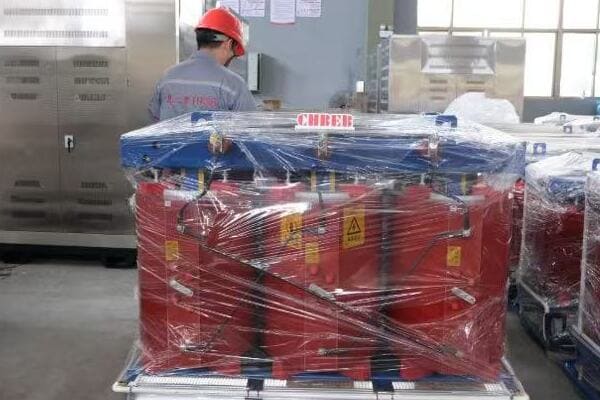
Let me walk you through the key considerations based on my years of experience in the field:
Understanding Your Power Requirements
Getting the power specifications right is fundamental:
-
Power Rating:
- Calculate your current and future power needs
- Consider peak loads and duty cycles
- I once worked on a project where we underestimated future power needs. Within two years, we had to replace the transformer, which was costly and disruptive.
-
Voltage Levels:
- Determine primary and secondary voltage requirements
- Consider voltage regulation needs
- In a recent industrial project, tight voltage regulation was crucial for sensitive equipment. We had to specify a transformer with additional taps to ensure stable voltage.
-
Frequency:
- Standard frequencies are 50 or 60 Hz
- Some applications may require special frequencies
- For a specialized testing facility, we needed a transformer that could handle variable frequencies. This required a custom design from the manufacturer.
Environmental and Installation Considerations
The operating environment significantly impacts transformer selection:
-
Indoor vs. Outdoor Installation:
- Indoor installations may require additional fire safety features
- Outdoor installations need protection against elements
- For a rooftop installation in a coastal area, we chose a cast resin transformer with special enclosure to withstand salt spray and high winds.
-
Temperature and Altitude:
- High ambient temperatures may require derating
- High altitudes affect cooling efficiency
- In a high-altitude mining project, we had to specify transformers with enhanced cooling systems to compensate for the thin air.
-
Humidity and Contamination:
- High humidity environments may require additional insulation
- Presence of dust or chemicals needs special consideration
- For a paper mill with high humidity and chemical exposure, we opted for a fully sealed cast resin transformer to ensure longevity.
Industry-Specific Requirements
Different industries have unique needs:
-
Medical Facilities:
- Require low electromagnetic interference
- May need additional backup systems
- In a hospital project, we specified ultra-low EMI transformers to protect sensitive diagnostic equipment.
-
Data Centers:
- High efficiency is crucial
- Often require redundancy
- For a large data center, we implemented a parallel redundant system with high-efficiency transformers to ensure both reliability and energy savings.
-
Renewable Energy:
- May need to handle variable loads
- Often exposed to harsh outdoor conditions
- In a wind farm project, we used specially designed transformers capable of handling the variable output of wind turbines.
Future-Proofing Your Investment
Consider long-term factors:
-
Scalability:
- Plan for future expansion
- Consider modular solutions
- In a growing industrial park, we installed transformers with higher capacity than immediately needed, allowing for future expansion without replacement.
-
Energy Efficiency:
- Look for high-efficiency models
- Consider total cost of ownership, not just initial cost
- We convinced a client to invest in a premium efficiency transformer. The energy savings paid back the extra cost in just three years.
-
Smart Grid Compatibility:
- Consider transformers with monitoring capabilities
- Look for compatibility with energy management systems
- For a smart city project, we specified transformers with built-in monitoring and communication features, enabling real-time load management.
Specification Matching Checklist
Here’s a checklist I often use when matching transformers to applications:
| Specification | Considerations | Example |
|---|---|---|
| Power Rating | Current and future needs, peak loads | 1000 kVA with 20% future growth allowance |
| Voltage | Primary and secondary levels, regulation | 11kV/433V with ±2.5% regulation |
| Environment | Indoor/outdoor, temperature, humidity | Outdoor, 45°C max ambient, coastal environment |
| Efficiency | Minimum efficiency requirements | 98% efficiency at 35% load |
| Special Features | EMI shielding, monitoring capabilities | Ultra-low EMI, built-in temperature monitoring |
| Industry Standards | Relevant IEC or IEEE standards | IEC 60076 compliant |
Remember, the key to successful specification matching is understanding both your current needs and future possibilities. Don’t hesitate to involve the transformer manufacturer in these discussions. Their expertise can be invaluable in fine-tuning specifications to your exact requirements.
In my experience, taking the time to thoroughly match specifications to your application pays off in the long run. It ensures you get a transformer that not only meets your immediate needs but also serves you well into the future, avoiding costly replacements or upgrades.
Comparing Technical Parameters and Performance Across Different Suppliers?
Are you finding it challenging to compare transformers from different suppliers? You’re not alone. Many buyers struggle to make apples-to-apples comparisons in this technical field.
Comparing transformers across suppliers involves evaluating key technical parameters like efficiency, temperature rise, impedance, and noise levels. It’s crucial to understand how these parameters affect performance in your specific application and to ensure you’re comparing equivalent specifications.
Let me share some insights on how to effectively compare transformer offerings:
Efficiency: The Long-Term Cost Saver
Efficiency is a critical parameter that directly impacts operating costs:
-
No-Load Losses:
- These are constant, regardless of load
- Lower no-load losses are especially important for transformers that are energized 24/7
- In a recent data center project, we chose a transformer with 15% lower no-load losses, resulting in significant energy savings over time.
-
Load Losses:
- These vary with the load
- Important for transformers that operate at high loads for extended periods
- For an industrial client with high, consistent loads, we prioritized low load losses, which paid off in reduced energy bills.
-
Total Losses:
- Consider the sum of no-load and load losses
- Compare at your expected average loading
- We once convinced a client to choose a transformer with higher initial cost but lower total losses. The energy savings offset the price difference in just two years.
Temperature Rise: Ensuring Longevity
Temperature rise affects the transformer’s lifespan and performance:
-
Winding Temperature Rise:
- Lower temperature rise generally means longer insulation life
- Standard classes are 80°C, 115°C, and 150°C
- Winding Temperature Rise:
- Lower temperature rise generally means longer insulation life
- Standard classes are 80°C, 115°C, and 150°C
- For a critical installation in a hot climate, we specified a transformer with a lower temperature rise class, ensuring longer service life despite the challenging environment.
-
Hot Spot Temperature:
- This is the highest temperature point within the transformer
- Critical for determining the transformer’s overall lifespan
- In a recent project for a 24/7 manufacturing facility, we paid special attention to the hot spot temperature to ensure long-term reliability.
-
Ambient Temperature Considerations:
- Higher ambient temperatures may require derating
- Consider both average and maximum temperatures at your site
- For a transformer installed in a desert location, we had to specify a model with enhanced cooling to handle the extreme ambient temperatures.
Impedance: Balancing Short Circuit Strength and Inrush Current
Impedance is a key factor in system design:
-
Short Circuit Strength:
- Higher impedance generally means better short circuit strength
- Important for locations with unstable power supply
- In an industrial park with frequent power fluctuations, we chose transformers with slightly higher impedance to improve fault current limitation.
-
Inrush Current:
- Lower impedance can lead to higher inrush currents
- Consider the impact on your electrical system
- For a hospital installation, we had to carefully balance impedance to manage inrush current without compromising on short circuit strength.
-
System Compatibility:
- Impedance affects voltage regulation and system stability
- Ensure compatibility with your existing electrical system
- In a grid upgrade project, we had to match new transformer impedances with existing units to maintain system stability.
Noise Levels: A Often Overlooked Factor
Noise can be a critical factor, especially in urban or sensitive environments:
-
NEMA Standards:
- Familiarize yourself with NEMA ST-20 noise level standards
- Lower noise levels often come at a premium
- For a transformer installed near a residential area, we specified ultra-low noise models to meet local regulations.
-
Frequency Components:
- Consider both overall noise level and specific frequency components
- Some frequencies can be more annoying than others
- In a recent office building project, we chose a transformer with not just low overall noise, but also a less irritating frequency profile.
-
Installation Considerations:
- Noise can be mitigated through proper installation techniques
- Consider vibration isolation and acoustic enclosures if needed
- We once solved a noise issue by retrofitting an existing installation with vibration dampeners and an acoustic enclosure, avoiding the need for a transformer replacement.
Comparison Table: Key Technical Parameters
| Parameter | What to Compare | Why It Matters |
|---|---|---|
| Efficiency | No-load losses, Load losses, Total losses at expected load | Directly impacts operating costs |
| Temperature Rise | Winding rise, Hot spot temperature | Affects transformer lifespan and performance in your environment |
| Impedance | Percentage impedance, Short circuit strength | Impacts system stability and protection |
| Noise Level | dBA rating, Frequency profile | Critical for installation in noise-sensitive areas |
Tips for Effective Comparison
-
Standardize Specifications:
- Ensure you’re comparing transformers with the same kVA rating and voltage class
- I once saw a buyer almost choose an undersized unit because they were comparing across different ratings
-
Consider Total Cost of Ownership:
- Factor in energy costs over the transformer’s lifetime
- A more efficient transformer can offset a higher initial cost
- We developed a TCO calculator for our clients, which often reveals that the cheapest option upfront isn’t the most economical long-term
-
Request Detailed Test Reports:
- Ask for factory test results, not just catalog values
- Compare actual performance data, not just specifications
- In one case, actual test reports revealed that a lower-priced option actually outperformed a more expensive one in key areas
-
Evaluate Tolerance Levels:
- Check the tolerances on key parameters
- A transformer "guaranteed" to tighter tolerances may be more valuable
- We once chose a supplier who offered tighter tolerance on efficiency, ensuring the performance we needed
-
Consider Future Needs:
- Compare how each option aligns with potential future requirements
- Look for features that might become important later
- For a growing data center, we selected a transformer with built-in monitoring capabilities, anticipating future smart grid integration
Remember, the goal isn’t just to find the transformer with the best numbers on paper, but the one that best fits your specific application and long-term needs. Don’t hesitate to ask suppliers for clarifications or additional data. A good supplier should be willing and able to help you understand how their product will perform in your specific scenario.
Beyond the Product: Assessing After-Sales Support and Long-Term Partnership Potential?
Are you focusing solely on product specifications when choosing a transformer supplier? If so, you might be overlooking a crucial aspect of the decision. After-sales support and long-term partnership potential can be just as important as the transformer itself.
Assessing after-sales support involves evaluating the supplier’s technical assistance, warranty terms, spare parts availability, and responsiveness to issues. Long-term partnership potential includes factors like the supplier’s financial stability, innovation pipeline, and alignment with your future needs.
Let me share some insights on what to look for beyond the product:
Technical Support and Expertise
The quality of technical support can make or break your experience:
-
Response Time:
- How quickly does the supplier respond to technical queries?
- Is there a dedicated support line?
- I once worked with a supplier who had a 24/7 technical hotline. This proved invaluable during a midnight emergency installation.
-
Expertise Level:
- Does the support team have in-depth knowledge?
- Can they provide application-specific advice?
- A supplier’s ability to suggest a design modification saved us from a potential performance issue in a unique industrial application.
-
On-Site Support:
- Do they offer field service and on-site troubleshooting?
- How extensive is their service network?
- During a complex installation in a remote location, the supplier’s willingness to send a technician on-site was crucial to the project’s success.
Warranty and After-Sales Service
A comprehensive warranty and service plan provides peace of mind:
-
Warranty Terms:
- What’s the duration and coverage of the warranty?
- Are there options for extended warranties?
- We once chose a supplier offering a 5-year warranty over a competitor with a slightly lower price but only a 2-year warranty.
-
Claim Process:
- How straightforward is the warranty claim process?
- What’s the typical turnaround time for claims?
- A supplier’s efficient handling of a warranty claim during a critical project reinforced our trust in their after-sales support.
-
Preventive Maintenance:
- Do they offer preventive maintenance services?
- Are there maintenance contracts available?
- Regular maintenance visits from our supplier have helped us avoid unplanned downtime and extend transformer life.
Spare Parts and Upgrades
Availability of parts and upgrade options is crucial for long-term operations:
-
Spare Parts Availability:
- How long does the supplier guarantee spare parts availability?
- Do they stock critical components?
- Quick access to a rare component from our supplier once saved us weeks of potential downtime.
-
Upgrade Paths:
- Does the supplier offer upgrade options for existing installations?
- Are their products designed with future upgradability in mind?
- We appreciated a supplier who offered an easy upgrade path to add monitoring capabilities to our existing transformers.
-
Obsolescence Management:
- How does the supplier handle product end-of-life?
- Do they provide advance notice and transition support?
- A supplier’s proactive approach in managing obsolescence helped us plan timely replacements without disruption.
Long-Term Partnership Potential
Consider the supplier’s ability to grow with your needs:
-
Financial Stability:
- Is the supplier financially sound for long-term support?
- Do they have a stable market presence?
- We once avoided a supplier who, despite good products, showed signs of financial instability. This decision saved us from potential support issues down the line.
-
Innovation and R&D:
- Does the supplier invest in research and development?
- Are they keeping pace with industry trends?
- A supplier’s ongoing innovation in energy efficiency has continually provided us with cutting-edge solutions for our evolving needs.
-
Alignment with Your Growth:
- Can the supplier scale with your future projects?
- Do they have experience in emerging areas relevant to your industry?
- Our long-term partnership with a supplier who expanded into renewable energy solutions has been invaluable as we’ve shifted towards green energy projects.
Comparison Table: Assessing Long-Term Support and Partnership
| Factor | What to Evaluate | Why It’s Important |
|---|---|---|
| Technical Support | Response time, Expertise level, On-site capabilities | Ensures quick and effective problem resolution |
| Warranty | Duration, Coverage, Claim process | Provides assurance and reduces long-term risks |
| Spare Parts | Availability, Stocking policy, Obsolescence management | Minimizes downtime and extends product life |
| Innovation | R&D investments, New product pipeline | Keeps you updated with latest technology |
| Financial Stability | Market presence, Financial reports | Ensures long-term support availability |
In my experience, these factors can significantly impact your total cost of ownership and operational efficiency. I remember a case where we chose a slightly more expensive supplier because of their superior after-sales support. This decision paid off multiple times over the years through reduced downtime and efficient problem resolution.
Remember, when you choose a transformer supplier, you’re not just buying a product – you’re entering into a long-term relationship. The right partner will not only meet your current needs but will also support your growth and adapt to your changing requirements over time.
Don’t hesitate to ask potential suppliers detailed questions about their support structures, future plans, and how they’ve handled challenging situations with other clients. Their responses can give you valuable insights into what kind of partner they’ll be in the long run.
Conclusion
Selecting the right dry type transformer manufacturer and supplier involves understanding transformer types, evaluating manufacturer capabilities, matching specifications to your needs, comparing technical parameters, and assessing long-term support. A holistic approach ensures you get not just a product, but a reliable long-term solution.
Free CHBEB Transformer Catalog Download
Get the full range of CHBEB transformers in one catalog.
Includes oil-immersed, dry-type, pad-mounted, and custom solutions.
Quick Message
Request A free quote
We'd like to work with you
- +86 15558785111
- [email protected]
- +86 15558785111
What We Do
CHINA BEI ER BIAN (CHBEB) GROUP, with 218 million in registered capital, originated from Beijing Beierbian Transformer Group. Headquartered in Beijing for R&D, it operates major production bases in Nanjing and Yueqing, producing high-quality products.
Latest Product
address
BeiJing
No 3,RongJing East Road,BeiJing Economic Technological Development Area,BeiJing,China
JiangSu
No 7️Xiangfeng Road,Jiangning,NanJing,JiangSu,China
WenZhou
No.211, Wei 16 Road, Industrial Zone, Yueqing, Wenzhou, Zhejiang, China.
XiangYang Industrial Zone ,YueQing,WenZhou,ZheJiang,China
contact us
- [email protected]
- +86 13057780111
- +86 13057780111
- +86 15558785111
Copyright © Bei Er Bian Group

